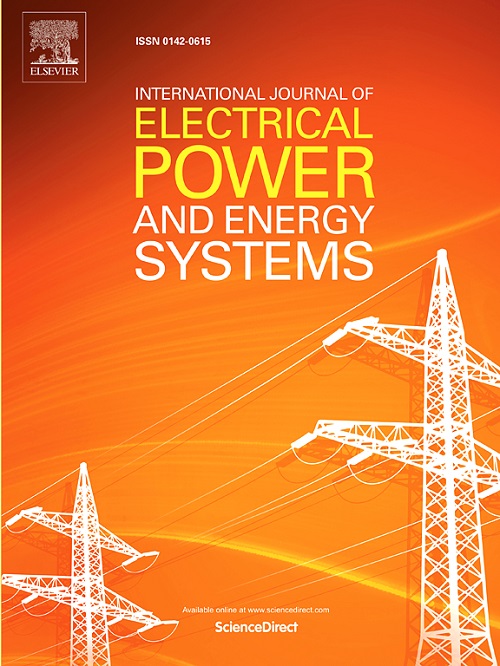A hybrid model for short-term offshore wind power prediction combining Kepler optimization algorithm with variational mode decomposition and stochastic configuration networks
IF 5
2区 工程技术
Q1 ENGINEERING, ELECTRICAL & ELECTRONIC
International Journal of Electrical Power & Energy Systems
Pub Date : 2025-05-08
DOI:10.1016/j.ijepes.2025.110703
引用次数: 0
Abstract
With the burgeoning development of the wind power industry, the significance of wind power forecasting in enhancing electricity generation efficiency, minimizing energy waste, and improving electrical grid management is increasingly highlighted. To enhance the stability and accuracy of wind power forecasting, a hybrid model integrating Kepler optimization algorithm (KOA), variational mode decomposition (VMD), and stochastic configuration network (SCN) is proposed. Firstly, the series of wind power data is decomposed using the VMD method optimized by the KOA, aiming to smooth the wind power series while preserving its inherent characteristics. Subsequently, permutation entropy (PE) is employed to order and reconstruct the decomposed wind power subsequences, with the selection of input features by the maximal information coefficient (MIC) and autocorrelation function (ACF). Following this, KOA is utilized to optimize the parameters of the SCN model, further enhancing the predictive performance of the SCN. Finally, a multi-seasonal and multi-scenario wind power forecasting analysis is conducted by using an actual data set from an offshore wind farm in China. Compared with the basic VMD model, the data decomposition efficiency of the optimized VMD model has been improved by 28.86%. Meanwhile, the prediction average error of the proposed model has decreased by 0.1385 compared with the basic prediction model. The results demonstrate that the proposed hybrid model exhibits superior stability and accuracy in short-term wind power prediction.
结合Kepler优化算法、变分模态分解和随机配置网络的海上风电短期预测混合模型
随着风电产业的蓬勃发展,风电预测在提高发电效率、减少能源浪费、改善电网管理等方面的意义日益凸显。为了提高风电预测的稳定性和准确性,提出了一种结合Kepler优化算法(KOA)、变分模态分解(VMD)和随机配置网络(SCN)的混合模型。首先,利用KOA优化后的VMD方法对风电数据序列进行分解,在保持风电数据序列固有特征的同时对其进行平滑处理。随后,利用置换熵(PE)对分解后的风电子序列进行排序和重构,并利用最大信息系数(MIC)和自相关函数(ACF)选择输入特征。随后,利用KOA对SCN模型的参数进行优化,进一步提高了SCN的预测性能。最后,利用中国海上风电场的实际数据集进行了多季节、多情景的风电预测分析。与基本VMD模型相比,优化后的VMD模型的数据分解效率提高了28.86%。同时,与基本预测模型相比,该模型的预测平均误差降低了0.1385。结果表明,该混合模型在短期风电预测中具有较好的稳定性和准确性。
本文章由计算机程序翻译,如有差异,请以英文原文为准。
求助全文
约1分钟内获得全文
求助全文
来源期刊
CiteScore
12.10
自引率
17.30%
发文量
1022
审稿时长
51 days
期刊介绍:
The journal covers theoretical developments in electrical power and energy systems and their applications. The coverage embraces: generation and network planning; reliability; long and short term operation; expert systems; neural networks; object oriented systems; system control centres; database and information systems; stock and parameter estimation; system security and adequacy; network theory, modelling and computation; small and large system dynamics; dynamic model identification; on-line control including load and switching control; protection; distribution systems; energy economics; impact of non-conventional systems; and man-machine interfaces.
As well as original research papers, the journal publishes short contributions, book reviews and conference reports. All papers are peer-reviewed by at least two referees.

 求助内容:
求助内容: 应助结果提醒方式:
应助结果提醒方式:


